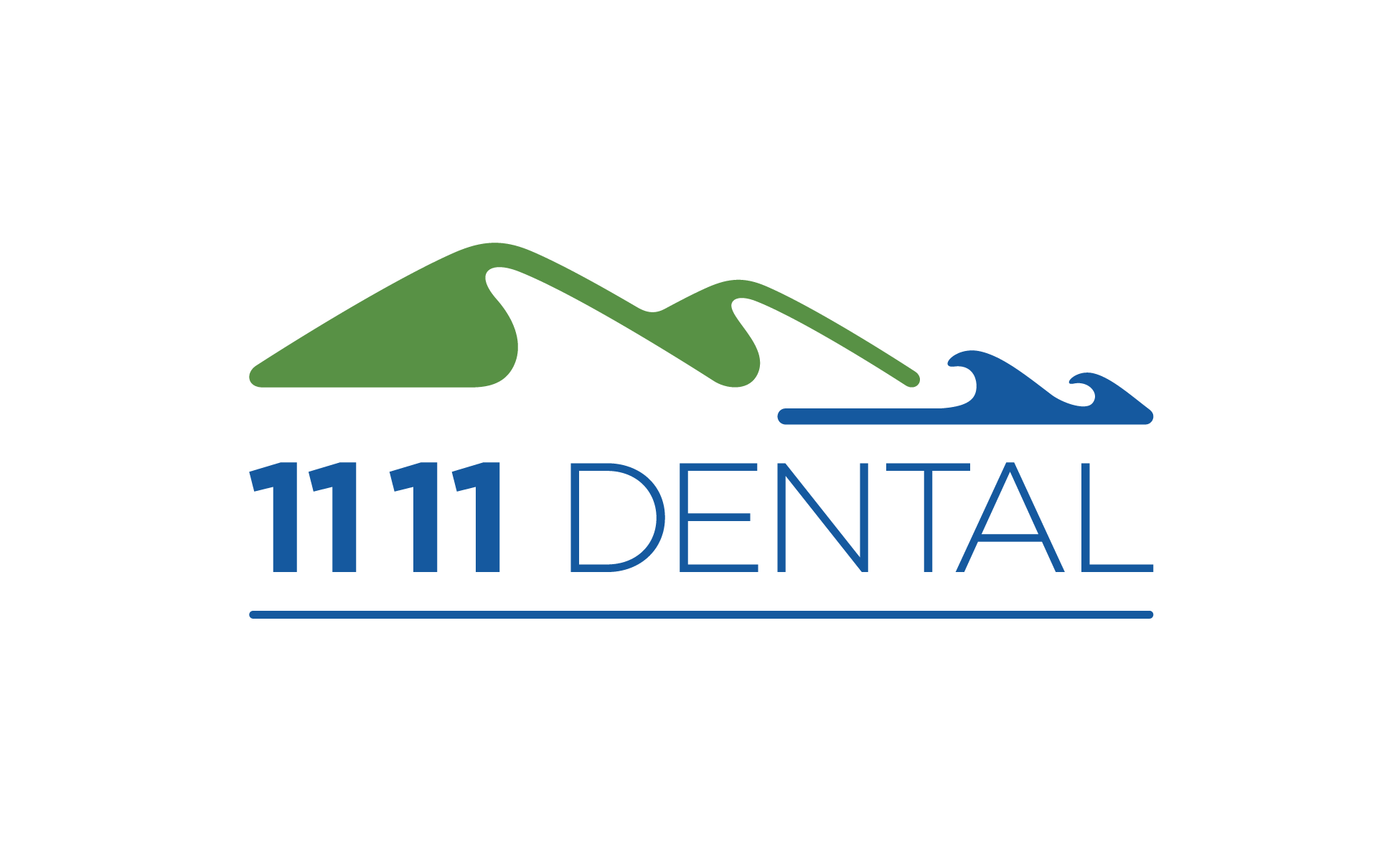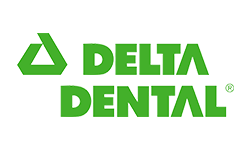COMPREHENSIVE DENTAL HYGIENE
Get your routine check-up and a professional teeth cleaning.
ROUTINE HYGIENE WELLNESS
Improve your daily brushing and flossing with Eleven Eleven Dental.
Daily brushing and flossing remove a great deal of the plaque and bacteria that accumulate on your teeth. However, it’s nearly impossible to remove it all on your own. As a result, your dental hygienist can be your partner in achieving good oral health.
Achieving Good Oral Health
Furthermore, visiting the dentist at least twice a year for professional cleaning can prevent tooth decay and periodontal (gum) disease. In addition, our dentist may recommend more frequent visits based on the condition of your teeth and gums. For instance, if you have a history of gum disease or are prone to cavities, more regular check-ups may be necessary.
Overall, maintaining a good oral hygiene routine at home combined with professional cleanings and check-ups can help ensure the long-term health of your teeth and gums. Don’t forget to check out our Invisalign Special Offer!

How Can We Help?
We offer a variety of services to assist with your hygiene and overall health.
- Visual evaluation of teeth, face, jaw, and neck
- Digital images to check for cavities and other possible problems
- Gum disease evaluation
- Professional teeth cleaning and fluoride treatment
- Screening for oral cancer
Caring for your Smile
Here is what is included in your typical hygiene appointment.
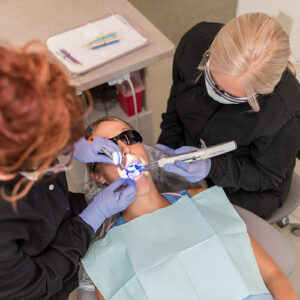
Visual & Gum Disease Evaluation
During the evaluation, your Port Angeles dentist will first check your teeth for any cracks, breaks, or decay. Additionally, they will examine your cheeks, gums, tongue, and the roof of your mouth for any abnormal areas.
Furthermore, since gum disease affects almost 50% of adults in the U.S. (Center for Disease Control), we conduct a comprehensive assessment during your exam to detect any signs of periodontal disease. Consequently, addressing periodontal disease in its early stages allows for easy control and potential reversibility.
However, because gum disease shows minimal symptoms until it progresses significantly, it is crucial to undergo evaluation for early detection of the disease. As a result, opting for conservative, early intervention is recommended, and our team will help you select the most suitable treatment options for your condition.
Digital Imaging
The dentist may recommend digital X-rays and photographs to help identify problem areas in your mouth. The type of images may vary based on your particular situation, but a full jaw x-ray, called a panoramic x-ray, will give the dentist a comprehensive view of all the structures in your mouth as well as your jaw joint and your sinuses.
In your situation, digital 3D imaging may be appropriate to determine the exact positioning of your teeth.
Your dentist may also use a special digital camera to take close-up pictures of your teeth or gums. This will help them identify and monitor any areas of concern. We also use intraoral cameras to provide live images while we examine your smile.
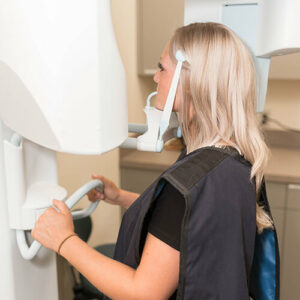
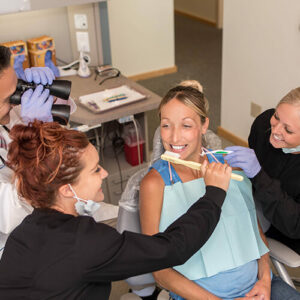
Fluoride Treatment (Cavity Prevention)
The American Dental Association (ADA) recommends fluoride treatments based on your risk for developing cavities. Our team evaluates your cavity risk level as low, moderate, or high, following ADA criteria. We offer individuals with low-risk fluoride treatment twice a year.
Individuals at moderate risk receive fluoride treatment twice a year and a take-home fluoride product to decrease their chances of developing another cavity.
Those at high risk for cavities may receive fluoride treatment more than twice a year, a take-home fluoride product, and an antimicrobial rinse to lower the levels of cavity-causing bacteria.
Professional Teeth Cleaning
All of our hygienists undergo thorough training to perform tooth cleaning effectively.
Our team actively removes plaque and tartar from your teeth, then polishes them to eliminate stains and smooth the tooth surface.
In addition to using hand-held hygiene techniques, our skilled hygienists utilize ultrasonic devices to deliver targeted treatments to hard-to-reach areas. These devices employ ultrasonic vibrations to crush and displace calcified deposits of calculus.
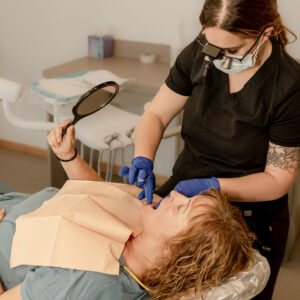
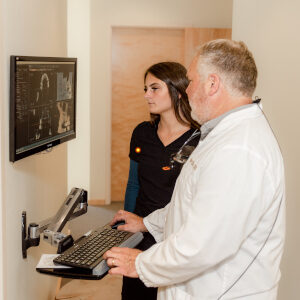
Oral Cancer Screening
First of all, the development of oral cancer is on the rise. Fortunately, when we detect oral cancer in the early stages, most cases respond very favorably to treatment. However, smoking increases the risk of developing oral cancer five times, and excessive alcohol use increases it two and a half times. Moreover, a persistent HPV (Human Papilloma Virus) infection increases it thirty-two times.
During your dental exam, your dentist will thoroughly examine all the tissue in your mouth, including your tongue, lips, and cheeks, to check for any abnormalities. Additionally, they will palpate for any unusual lumps or bumps and provide recommendations for follow-up if necessary.
Furthermore, we can perform a salivary screening to detect an active HPV infection. In order to reduce your risk of oral cancer, the recommendations include undergoing regular screenings and considering lifestyle changes.
LASERS IN DENTISTRY
Taking your dental care into the modern age.
Dentists have used lasers in dentistry for several years, and they offer additional benefits when hygienists combine them with regular cleanings or therapy for gum disease. Moreover, our offices’ hygienists perform two specific procedures that can reduce your risk of gum disease or, alternatively, improve healing if gum therapy is needed.
LASER BACTERIAL REDUCTION
Also known as "Laser Decontamination".
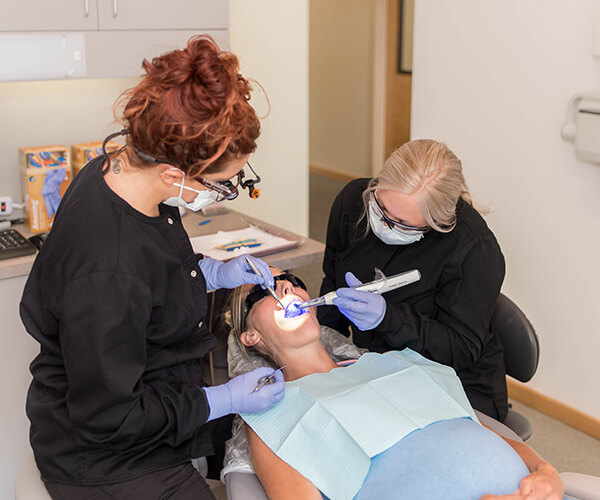
Elevated Risk of Developing Gum Disease
The procedure involves emitting thermal, light energy through a small, fiber optic tip between the teeth and the gums. This energy vaporizes the harmful bacteria at or below the gum-line known as biofilms.
Furthermore, research has demonstrated a direct link between biofilms and an elevated risk of developing gum disease, a serious infection that impacts the supporting bone. As a result, during your hygiene appointment, the hygienist will disrupt the biofilm to decrease the risk or severity of periodontal disease. However, they cannot eliminate the bacteria without utilizing the laser.
Ultimately, eliminating the bacteria will decrease inflammation in the gum tissue and maintain healthier gums between visits. In conclusion, the laser treatment is an effective way to improve gum health and prevent further complications.
There are no known side effects to laser decontamination. Most patients do not report any sensation during or after the use of the laser. Occasionally, patients will describe a warm, tingling sensation felt during the procedure.
Laser decontamination takes approximately 5-10 minutes to complete, and the entire mouth is treated at one time.
The laser uses light energy that is absorbed into the pigmented cell walls of the harmful bacteria, vaporizing them.
The bacteria in our mouths that do not contribute to inflammation typically lack pigment in their cell walls and thus are not affected in the same way.
Dental professionals now have access to this technology by using a laser specifically designed to treat the gums. Due to the advances in the production of these dental lasers, our office now has the availability to offer laser decontamination.
We are happy to treat our patients with an elevated level of care that is not only supported by years of research but also affordable.
Although the laser kills millions of harmful bacteria at your hygiene appointment, the bacteria will begin to multiply again over time, and will eventually be back to their original levels in a few months.
For this reason, we recommend laser decontamination be included every time you see your hygienist. For some patients with a history of periodontal treatment, that is every 3 months. You may be thinking to yourself, “If the bacteria just grow back, what’s the point?”.
One of the most important factors in obtaining optimal oral health and control of periodontal disease is your body’s ability to fight off these harmful bacteria. It is true that we are unable to kill the bacteria forever with a single use of the laser, but if it is completed at each appointment, we are able to keep them at a constant lower level, giving your immune system the chance to keep your body healthier.
LASER ASSISTED PERIODONTAL THERAPY
Bacterial Infection
Laser Assisted Periodontal Therapy involves emitting thermal, light energy through a small, fiber optic tip between the teeth and the gums. Specifically, this energy vaporizes the harmful bacteria at or below the gum-line and removes the infection.
Active periodontal disease results from this bacterial infection, causing a breakdown of the gums and bone surrounding the teeth. Furthermore, typically, dental hygienists perform a non-surgical, conservative procedure called curettage to remove the infected, diseased tissue during gum therapy using a local anesthetic. In other words, this procedure helps address the root cause.
There are no known side effects to incorporating the laser into gum therapy. Most patients report no discomfort during or after the use of the laser.
Local anesthetic is utilized for most laser-assisted periodontal therapies. It is also recommended to apply vitamin E oil following the therapy to provide a lubricant barrier and additionally promote healing.
Dental professionals now have access to this technology by using a laser specifically designed to treat the gums.
Due to the advances in the production of these lasers, our office now has the ability to offer laser-assisted periodontal therapy as part of our standard of care.
We are happy to treat our patients with an elevated level of care that is not only supported by the research but also affordable.
Although the laser kills millions of harmful bacteria during the procedure, the bacteria will multiply again over time, returning to original levels over the next several months.
For this reason, we recommend laser decontamination therapy be included every time you see your hygienist. For some patients with a history of periodontal disease, this may be every 3 months. One of the most important factors in obtaining optimal oral health and controlling periodontal disease is the body’s ability to fight off these harmful bacteria.
Incorporating laser bacterial reduction into appointments following initial gum therapy keeps the bacteria at a lower level, giving the immune system a chance to keep the gums healthier.
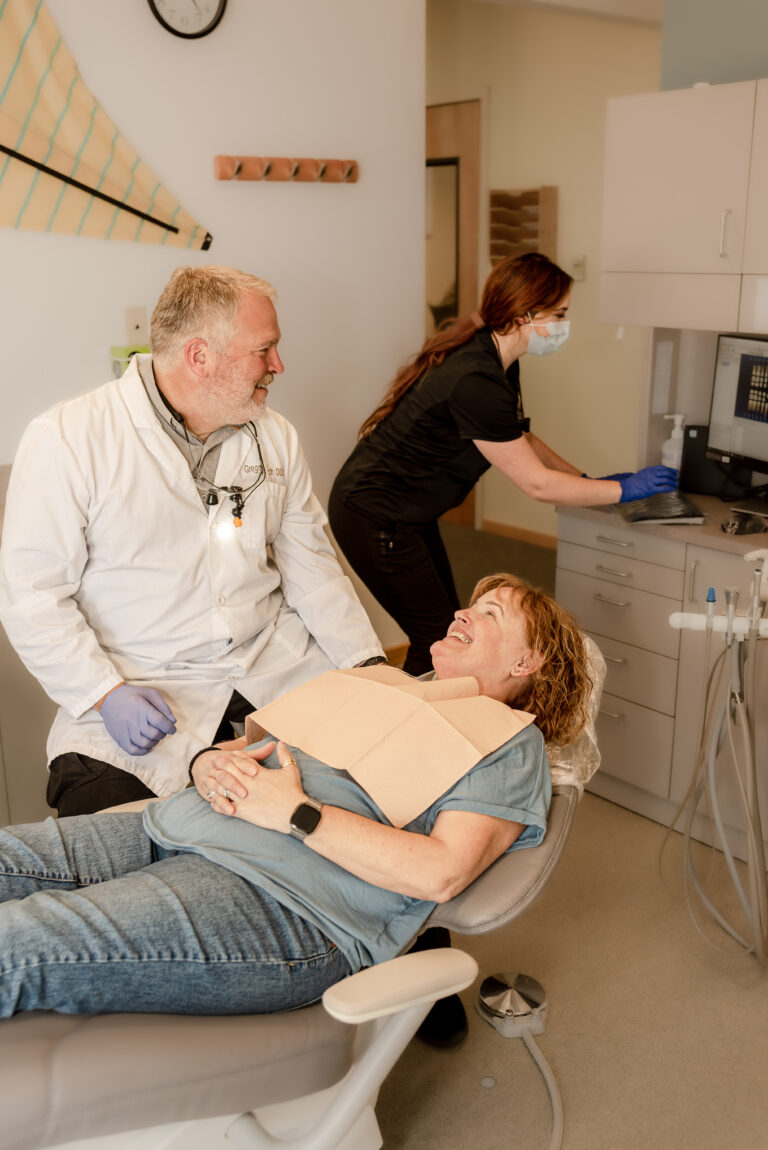










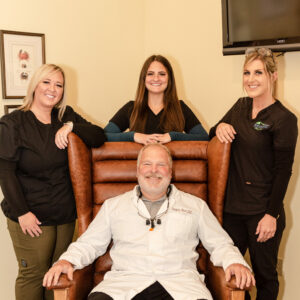
How often should I get my teeth cleaned?
The Academy of General Dentistry recommends that you see the dentist for a check-up and cleaning at least twice a year. Your Port Angeles dentist may suggest visiting more frequently based on your specific situation and risk of disease. Certain conditions like diabetes, heart disease, or pregnancy may necessitate more frequent cleanings to maintain your oral and overall health.
Will my insurance cover my check-up appointment?
Most insurances cover the procedures completed at a check-up and cleaning appointment. Furthermore, our great team of insurance coordinators will help you navigate through your specific insurance benefits. Additionally, they will provide you with an estimate of costs if there is a remaining balance after the insurance payment. In other words, we will ensure you understand your coverage and any out-of-pocket expenses upfront.

